本文主要是介绍java中比例尺,建筑生入门必备——比例尺的选择与应用,希望对大家解决编程问题提供一定的参考价值,需要的开发者们随着小编来一起学习吧!
原标题:建筑生入门必备——比例尺的选择与应用
理解与运用建筑比例
Understanding and Using Architectural Scales
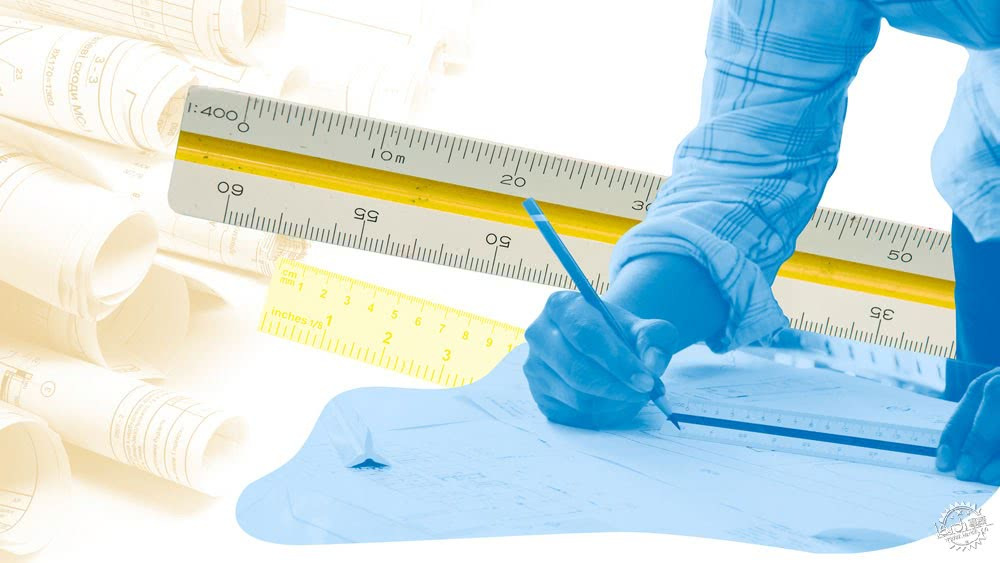
建筑师与城市规划者的工作有着多种形式,因为大部分的学生课程设计就有着许多不同的形式,同时这些课程还涉及到许多不同的规模和背景。从大规模的城市规划,到住宅翻新,从城市设计到家具设计,不同的对象便有着不同的形态,然而,所有的设计作品的共同点都在于需要通过图像和模型来进行表达。
无论项目的具体内容是什么,图像都是能够表达想法、概念、现实和推测的一种方式,而尺度则表达了真实世界和图像之间的关系,例如1:1的比例尺也名为“全尺寸”。
相比起两个数字之间的关系,比例尺能够很好地表达清楚细致的程度,亦或是表达出项目所处的不同的阶段。因为在设计过程中,宏观的设计需要较小一些的比例,而一些细部设计则需要较大的比例。那么,应该如何正确地应用比例关系呢?
The work of an architect and urban planner can take on many forms thanks to the diverse curricular composition of most graduate courses, with subjects that deal with designing in different scales and contexts. From great urban plans to home renovations, and the metropolis to furniture design, these branches deal with different objects, however, all in common are the use of drawing and models as a tool for representation.
Whatever the project may be, drawing is the way to represent reality, ideas, speculations, and conceptions. Scale, a factor that establishes the level of reading one must make of these representations, determines the link between the real world and the dimensions of the drawing or model. For instance, the scale 1:1 is also known as “full size.”
More than a relation between two numbers, scale works as a guide to the degree of detailing and/or indicates in which phase the project is in (since the natural tendency of the designing process is to start from a broader thought process, which requires a smaller scale, to a more detailed consideration, which requires a larger scale). However, how do you determine what is the ideal scale for a specific representation?

ArchDaily
1:50000至1:2000
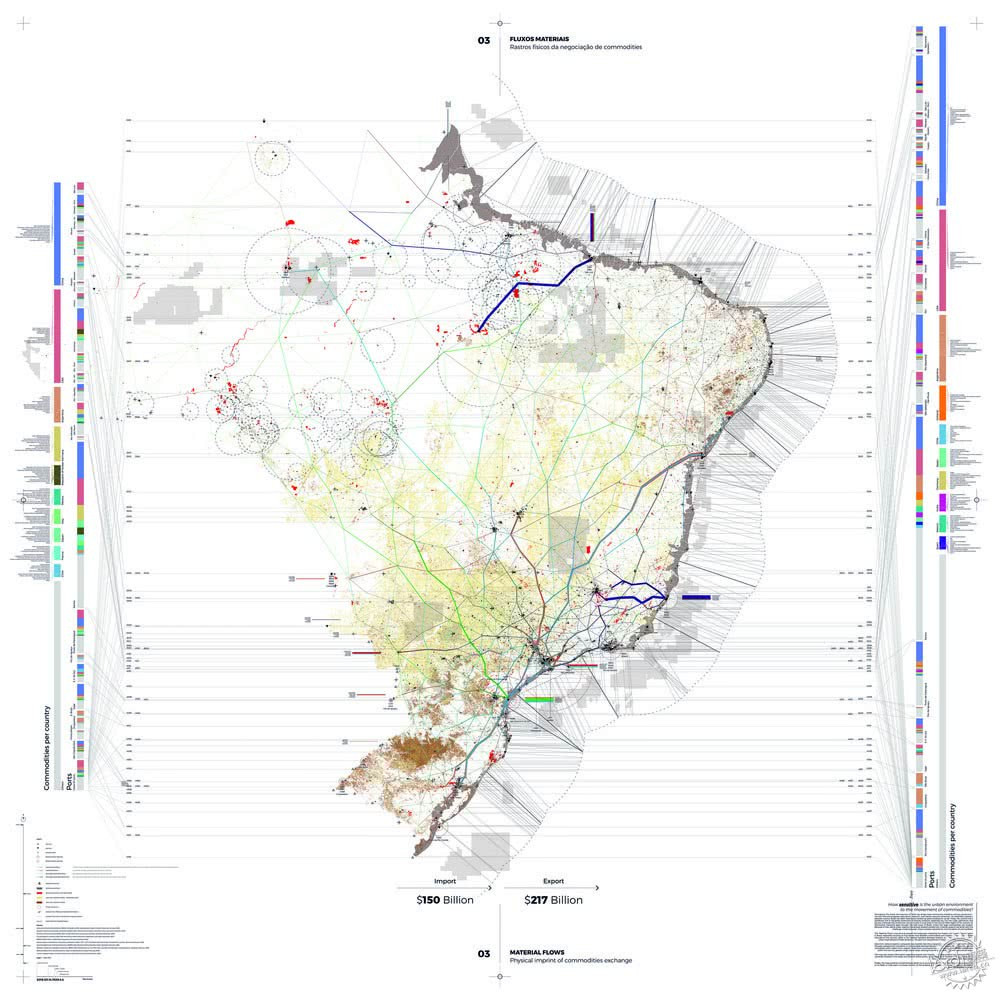
Map of Material Flows - Physical traces of commodities trading. Courtesy of the Brazilian Pavilion at the Venice Biennale 2018
较小的比例尺度通常能够表达出较大范围的设计方案,例如城市地图、街区,甚至是小城镇都可以应用,因为这样的比例尺能够处理综合数据。
而这种比例类型也常常应用于城市规划和分区的设计,例如总平面设计和航拍数据测量。
1:50.000 to 1:2.000
The scope of small scales of representation, that is, drawings that are reductions of reality, are usually good for big dimensions. cartography, urban maps, regions, and even small towns can make use of them, for they can handle comprehensive data.
This type of scale is also found in urban planning and zoning propositions, such as master plans, as well as in aerial photogrammetric surveys.
1:1000 至1:500

Minimob/MAPA. Courtesy of MAPA
如果想放大项目中的局部区域,而不是放大整个项目场地,那么1:1000到1:500之间的比例则最为合适。
这些比例尺能够清晰地表达建筑在城市中的位置,以及街区与社区所处的位置,亦或是一些需要重点表示的重要的基础设施元素等等。
当进行研究时,这些比例十分便于建筑高度、场地应用等等方面的研究。
1:1.000 to 1:500
Zooming in on projects that demand a contextual reading without needing to show large territorial extensions, the interval between 1:1000 and 1:500 is ideal for most site plans.
An overview of the building and its location in the urban fabric, such as a block or a neighborhood, for example, can be contained in those scales. It is possible to highlight important elements such as the availability of infrastructures, among others.
When it comes to studies and researches, they come in handy for surveys such as buildings’ heights, land use, etc.
1:250至1:200
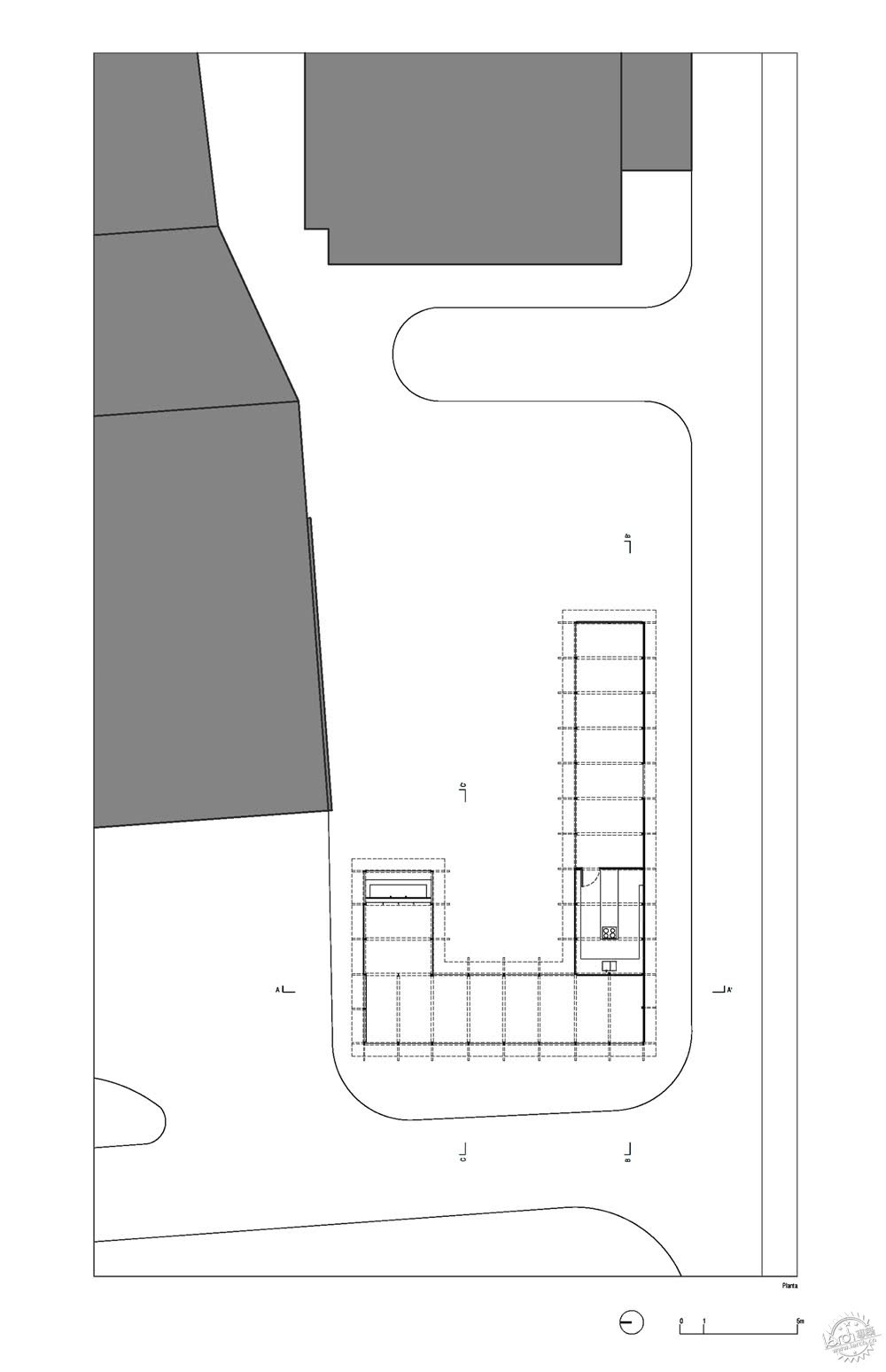
Communal Kitchen of the Lands of the Coast / ateliermob + Collective Warehouse. Courtesy of ateliermob + Collective Warehouse
如果表达的重点不是周围环境,而是某个建筑单体本身,那么比例尺就需要适当地放大,可以选择1:250和1:200的比例来表达这些体量。
设计的各个组成部分在这样的比例中会表达得更加清楚,例如形态和体量、入口、屋顶形式,以及建筑和空旷空间之间的关系。这些比例还能够用于平面、剖面、立面的表达,从而提升图像的表达程度,并且来表达空间构成形式。
即使是一些小项目,它们也同样适用于这种比例,因为在早期的项目沟通阶段,这些比例便能够很准确地表达出项目的发展方向。
1:250 to 1:200
Once the representation’s aim stops being the surrounding context and starts focusing on the design itself, it becomes necessary to zoom in. The scales 1:250 and 1:200 handle these type of site plans.
The components of the design become more evident here; the shape and volume, the access, roof characteristics, and the relation among built and empty spaces. These scales can also serve plans, sections, and elevations in larger buildings for a broader reading of the proposal, and they can even contemplate some spatial compositions and layouts.
Even when it comes to smaller interventions, they can be used on a first approach, working satisfactorily in the early phases of discussions and decision making that, with time, will guide a more accurate development of technical and constructive matters.
1:150至1:100

Partners In Health Dormitory / Sharon Davis Design. Courtesy of Sharon Davis Design
而随着比例的再放大,图像便能够清楚的表达设计方案的细部了,在1:150和1:100之间的比例就能够表达出小尺度的建筑。而对于较大的建筑,它们在这样的比例中会具有更多的细部,例如结构元素和空间布局。
在不同的情况下,都需要考虑的是每个图像背后的表达内容,无论平面还是空间,从而对每个强调的元素进行表达。
1:150 to 1:100
As the scales get bigger, it is necessary to evaluate the degree of expressiveness and the size of the work being represented. Scales between 1:150 and 1:100 can also work well for first approaches of smaller works and typologies. In the case of larger buildings, they contemplate more detailed drawings and models, including structural elements and a better-defined layout.
In any case, it is important to consider the intentions behind each representation, be it two or three-dimensional, so as to rank which elements are to be highlighted.
1:75至1:25

Surfer's Residence / Java Architecture. Courtesy of Java Architecture
同样地,1:75和1:50等比例能够清楚的表达出楼层中的结构与平面之间的关系。
1:75 to 1:25
Just as well, the scales 1:75 and 1:50 work with structures, layouts and the relations among floors.

Urbanization of the Jardim Vicentina / Vigliecca & Associados. Courtesy of Vigliecca & Associates
在一些情况下,这些比例也能够表达出地面和墙面的涂层,以及室内设计。在1:50到1:25的比例中,图纸还能够表达出房间中设置的管道、电气、结构的优化设计。
In some cases, they are also valid for flooring, specifying wall coatings and for interior design. From 1:50 to 1:25 it is also possible to zoom in on rooms to better detail specific components, such as plumbing, electrical or structural plans.
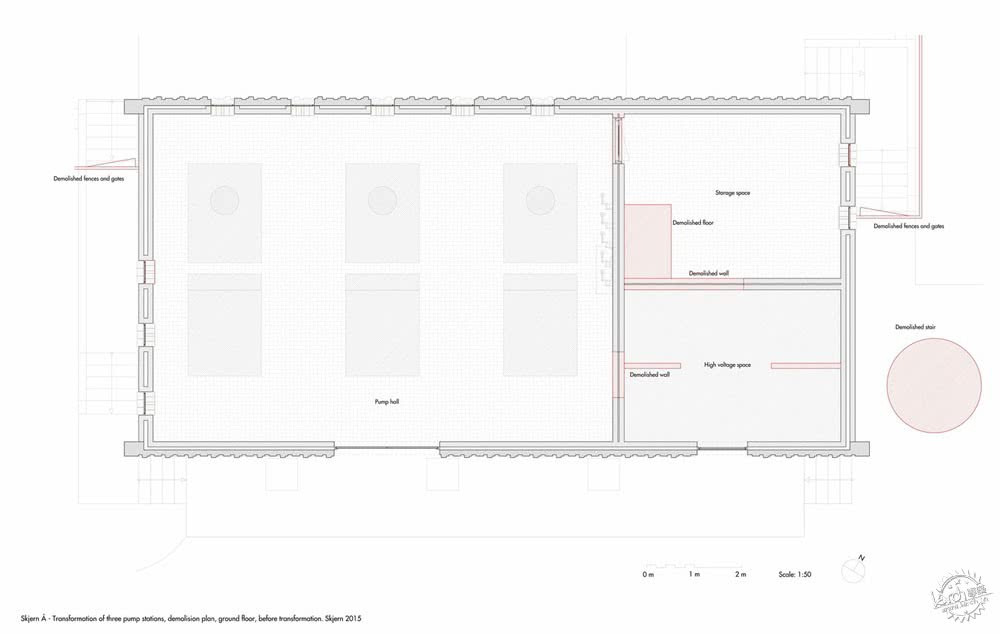
Skjern / Johansen Skovsted Arkitekter River Pumping Stations. Courtesy of Johansen Skovsted Arkitekter
1:20至1:10
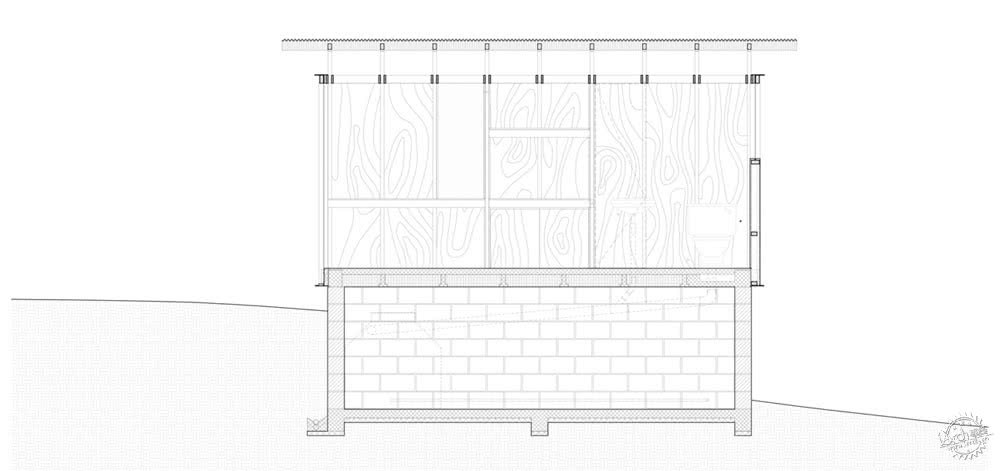
Surveillance Module / Escobedo Soliz. Courtesy of Escobedo Soliz Surveillance Module / Escobedo Soliz. Courtesy of Escobedo Soliz
如果要表达空间中的家具系统,那便可以使用1:20和1:10的比例。对于建筑师和家具设计师而言,这种比例非常常见,因为小型物体通过大比例尺度能够更加清晰地表达。
1:20 to 1:10
A more specific use of the 1:20 and 1:10 scales is to represent furniture. This is common for both architects and furniture designers to present the workings of the components and their structure. Being smaller objects, the need for a greater scale is evident.
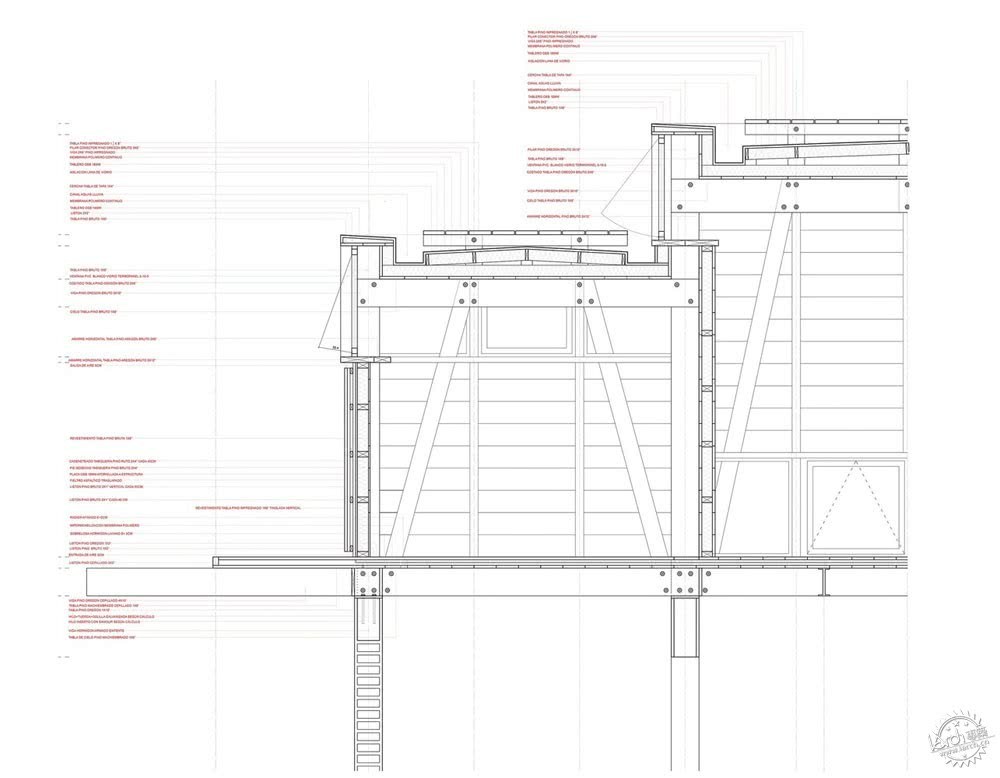
AYC / DX Architects. Courtesy of DX Arquitectos
在建筑中,这些比例则适用于细部的设施。
In buildings, these scales are used in detail drawings.
1:5至1:1
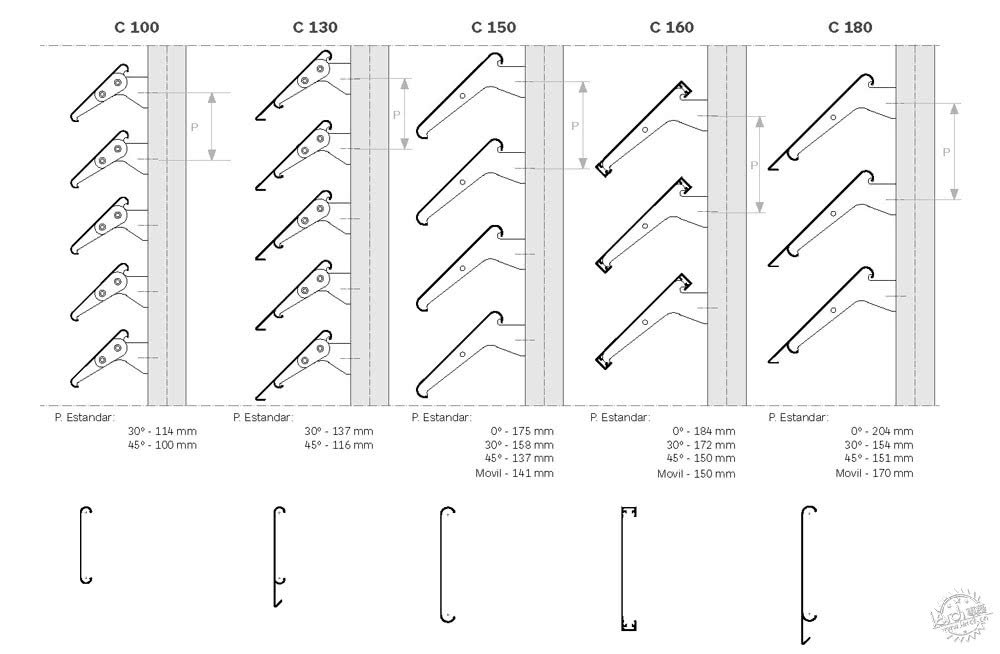
White Angel Building / Albert Simó Bayona and Eugénia Rodríguez Segarra. Courtesy of Gradhermetic
当表达的目标不再是项目的整体设计,而是施工方面的细部构成时,再大一些的比例才能够更加精准地将其绘制出来。因为这些图像需要较多的表达内容,尤其是设计到材料、设备、配件等所构成部分时,因为它们在更加微观的程度上需要清晰可见,因此此类比例一般应用在施工图之中。
1:5 to 1:1
When the aim is no longer to represent the spatial organization of the projects, but the constructive aspects and its components, the large scales are the ones that allow us to communicate the technical details with more precision. It demands great development in drawings, particularly when it comes to materials, fixings and fittings, that is, the functioning of the components and how they should be built. This means that they are more common in the advanced phases, such as an executive project.
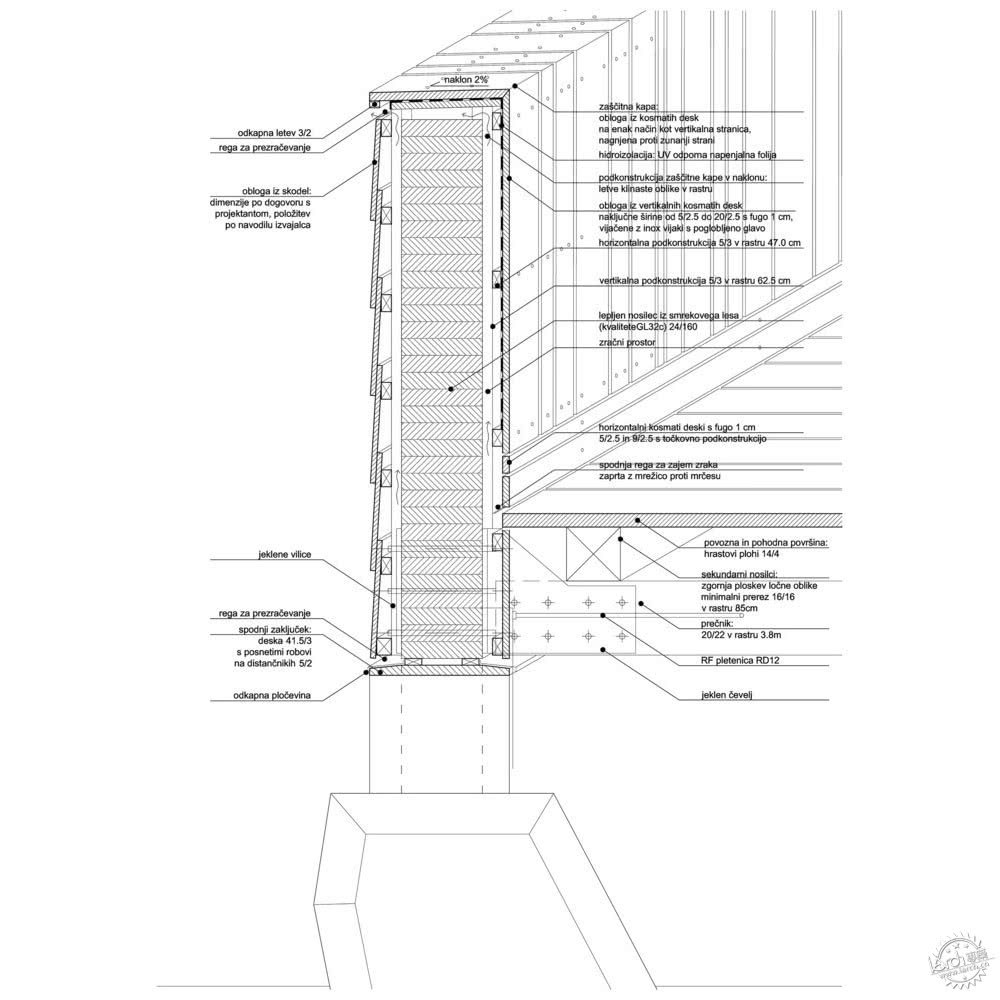
Bicycle bridge over the Sava River / Arhitekti dans. Courtesy of dans arhitekti
大比例的三维模型十分适合原型的制作,这常常应用于在施工现场也许也无法设计出的方案。
建筑比例应用的系统化表达的目的是强调思考的重要性。在设计的过程中,通过不同的比例来表达不同的内容是每位建筑师日常工作中需要考虑的重要组成部分。
Large-scale tridimensional models are better suited as prototypes for solutions that come about during the designing process that may or may not be used in the construction site.
__
The attempt to systematize a guide for the use of scales in architecture intends to highlight the importance of thinking and decision making when it comes to selecting what is to be shown in a project. Scaling reality to deal with different levels of complexity during the designing process is part of every architect’s development and daily work.


ArchDaily
注:文中所给出的比例图像并不是按照准确的比例绘制而成。数字问题和缩放工具使得图像失真。因此文中的图例只是表达能够用于建筑图像绘制的元素。返回搜狐,查看更多
责任编辑:
这篇关于java中比例尺,建筑生入门必备——比例尺的选择与应用的文章就介绍到这儿,希望我们推荐的文章对编程师们有所帮助!






